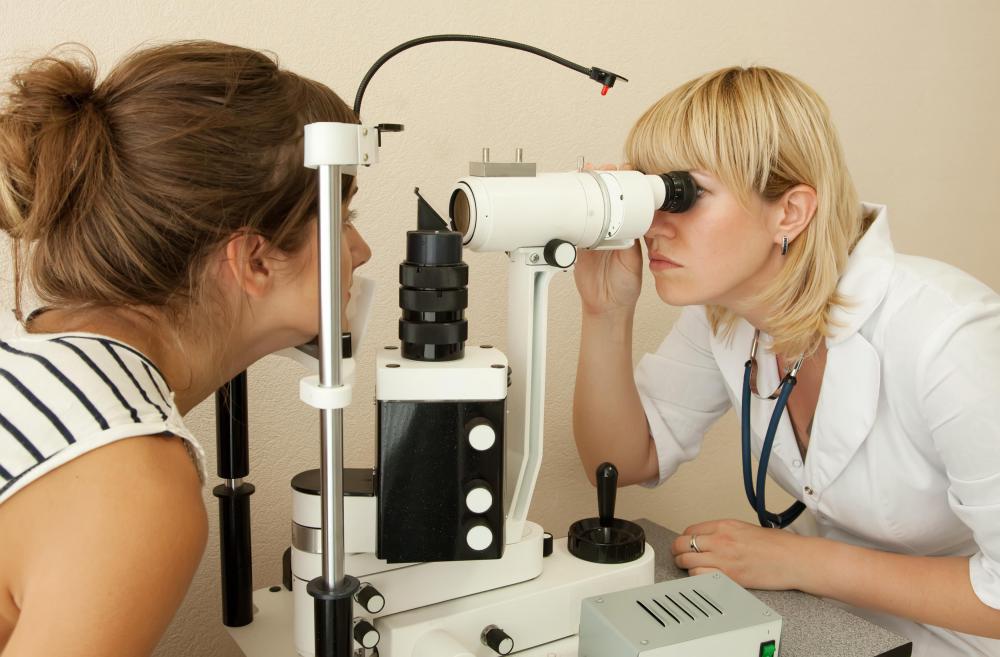At TheHealthBoard, we're committed to delivering accurate, trustworthy information. Our expert-authored content is rigorously fact-checked and sourced from credible authorities. Discover how we uphold the highest standards in providing you with reliable knowledge.
What is Visual Perception?
Visual perception is one of the senses of the body which allows the brain to intercept and interpret visible light, creating the ability to see. Sight is regarded as a critical sense by many people, as the world contains a great deal of important visual information. Many organisms have developed some form of visual perception, and there are a number of different systems animals employ in the process of interpreting visual stimuli.
Visual perception is provided courtesy of a light-sensitive organ known as the eye. A number of structures within the eye contribute to visual perception, with the most important being the rods and cones in the back of the eye which respond to light, sending signals along the optic nerve to the brain so that the brain can interpret them. Another structure of interest in the eye is the pupil, which dilates and contracts to control the amount of light which enters the eye.

Several different processes are involved in visual perception. Some are physiological, caused by the reaction of the eye to light, which converts light into signals which can be understood. Others are psychological, allowing the brain to make sense of the images it sees. The Gestalt theory in psychology explains how the brain deals with visual input, and the ways in which the brain smooths out and normalizes images to make sense of them.

In a classic example of Gestalt theory, when someone opens the newspaper and sees a photograph, the brain interprets the photograph as a smooth, clear image. Yet, when inspected closely, the photograph is actually a series of tiny dots of ink. The brain blends these dots together to create the appearance of a crisp image, and it is also capable of blending dots of different colors to create new ones, allowing a newspaper to use relatively crude printing techniques to produce images which will be recognizable to readers. The same process is allowed in the perception of images on a computer screen, which are presented in the form of pixels of information.

A number of things can interfere with visual perception. Some people have anatomical or physiological abnormalities which make it difficult or impossible to see. Sometimes these abnormalities can be addressed or corrected, as when someone dons a pair of glasses to see clearly because the structure of his or her eye creates myopia. People can also have problems in their brains which interfere with vision, in which case the eye functions perfectly, but the brain is unable to interpret or understand the signals sent by the eye.

Sight is deemed an important sense, so doctors may administer visual perception tests to their patients to confirm that their eyesight is in good condition, and to identify problems and issues which should be addressed. Problems with visual perception, in addition to being frustrating, can also be a sign that a patient has a more serious underlying medical condition.
AS FEATURED ON:
AS FEATURED ON:
















Discussion Comments
Part of sight perception is a person's visual memory, or the way that we can look at a building or a person and remember what and who they are, or when we last saw them, and all sorts of other associative memories. While I imagine people who cannot see must be able to build their own ways of identifying places and people-probably using smell and sound, mostly- it would be very difficult for me, or at least I think so, since I have always been able to see.
A scientific and complete explanation to movies like " At first sight" and " Blind Dating".
Mr. Smith how do you select the topics you write on? The diversity is really interesting. Actually we'd consider these articles as complete in everything there is to know about something -- but what is it that you refer to?
Post your comments